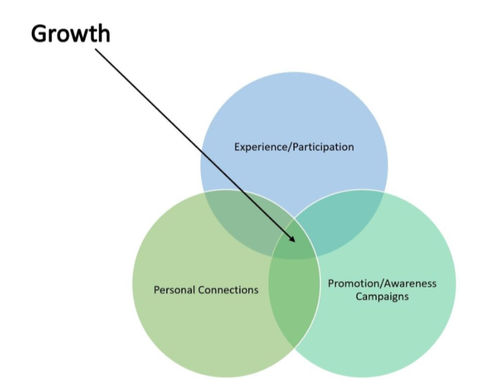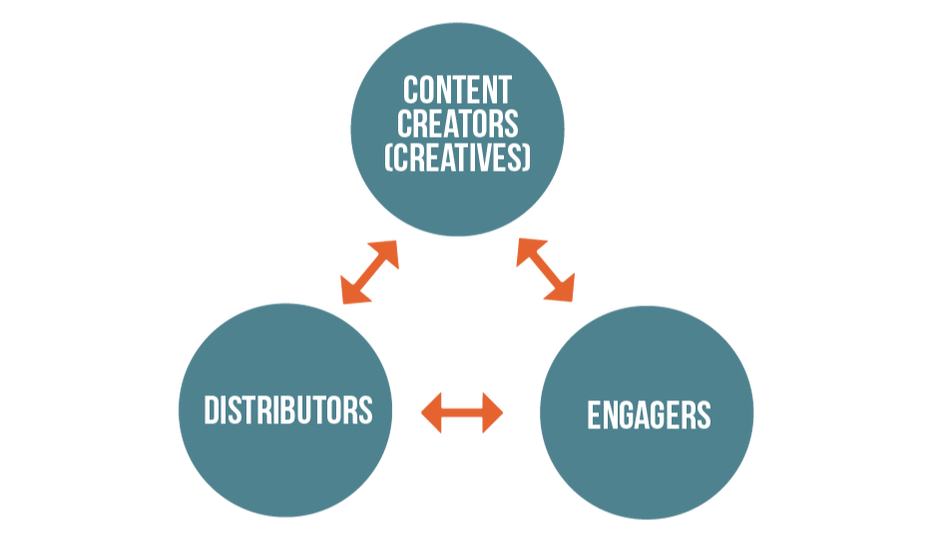Jamie Jean Schneider DommDigital Strategist for the North American Division In terms of who makes up the digital discipleship and evangelism team, our philosophy includes everyone. The integrated model utilizes every active member in a holistic approach that aims to scale up the traditional friend/community evangelism and discipleship models, not replace them. What does this mean practically? It’s not a digital approach attempting to subvert a traditional approach, but, rather, the entire church body using all its human resources, diversity of spiritual gifts, and available tools to work together for a common goal. Church growth is a product of promotion, experience, and personal connections. Digital technology is a powerful tool to guide more people into your church, but the on-site experience and personal connections is what will keep them coming. After all, it’s one challenge to attract new people; it’s another to get them to keep returning. To encourage people to remain in your community, whether online or in person, they must not only have a good experience, but also connect with the members on a personal level and become integrated as a participating member of the community. If we understand the local church to be a community of believers, we must seek to create meaningful connections, reaching out to seekers whose experience often starts online, as well as to those already in our house of worship. Your church’s online interactions with potential visitors should make them want to experience your faith and mission in person. Then, when they do come for that on-site experience, it should be a continuation of the positive relationship you’ve built with them online. The same is true in reverse. To achieve a continuity of experience and relationship building, everyone is part of the process. This means the 84-year-old greeter at the door is part of your digital discipleship and evangelism team just as much as the tech savvy youths who create video snippets and content for your social media. It includes the passionate and knowledgeable worship leaders who answer questions and host online bible studies. Remember, what starts in the digital space is not confined to the digital space. It may take weeks, months, or years, but eventually those people who have been touched by your digital voice may be moved by the Holy Spirit to walk in the door. From their perspective, it’s all one spiritual journey and experience, not digital versus traditional. They don’t view their experience in silos; therefore, we must break down the silos of how we go about discipleship and evangelism. Every touchpoint matters and must tell a consistent story!Look at this process of evangelism holistically. Consider all possible touchpoints in the list below and ask, “Where does the experience decelerate? Where is the breakdown in communication?” Touchpoints by role groupings include but are not limited to: Creatives/Creators:
With the digital discipleship and evangelism model shown above as a foundational concept, we can understand how the roles of creators, distributors, and engagers can fit into the overall seeker/visitor experience. There may be an overlapping of functions that can occur at multiple touchpoints. Every church is different and has different human resources, and spiritual gifts to draw from. This concept is scalable and adaptable to your situation. Make room for digital discipleship and evangelism. Change can be difficult, especially for institutions grounded in tradition. However, the Adventist Church is also rooted in a movement that was led by young people. We must again empower talented youths in our churches to take the lead in areas where they naturally excel, such as digital communications and community building. In addition, we have not done a good job of recognizing and utilizing the spiritual gifts of tech savvy and creative members. These gifted individuals have a wealth of talent to offer mission work and should be encouraged to use their skills in service. We can change the culture in our faith communities to make them feel that the Church truly values their time and talents just as much as Bible workers, nurses, Bible study leaders, and speakers. Form teams of content creators, distributors, and engagers. Each church likely has various members who could specialize or lead in certain areas. These can be powerful personal ministry opportunities, especially for empathetic persons who can facilitate positive conversations online and share stories of faith. Seek to create a culture of sharing and engaging with church social media content as a means for individuals to help fulfill the church’s mission and expand the reach of messages. Anyone who is on social media, has an email address, or is connected to the internet can share content. It doesn’t matter if a person has four friends or 40,000, they have influence. Find ways to leverage social influence. If people are connected to others through digital technologies, they have digital influence. Each impression/message received represents a person touched by your message and mission. “Social butterflies” can learn to use their online and offline influence to engage in practical mission work. There is a place for all skill levels. Influencer groups in your church may include, but are not limited to:
Organize multi-generational training and mentorship opportunities. This will only strengthen your church body and improve cross-generational relationships. Young people yearn for mentorship, and the older generations can learn a lot form the natural skills of the youth. The church should be the ideal example of two-way mentorship in action. Ultimately technologies change, but people and their needs largely remain the same. Healthy communities involve multiple generations coexisting in a collaborative and supportive manner. In summary, to make room for digital discipleship and evangelism in your church:
Utilize Digital Bible Workers. If you are lucky enough to have a Bible worker, empower them to expand their efforts digitally. Social media and other digital technologies can be leveraged as lead generating tools. Remember, young people spend upwards of 9-18 hours a day behind a screen, and that affords the church a lot of opportunities to reach them with relevant content and conversations facilitated for seekers. Ideally this is someone who can ultimately lead a focused evangelistic effort, train others, build a dedicated team, and work with other groups and initiatives within your church. Digital technologies allow a Bible worker to enter a person's life at the convenience and comfort level of the recipient by providing relevant online content, a degree of anonymity, a simple platform for question and answers, and opportunities to engage and form relationships. What does a Digital Bible Worker Do?Digital Bible workers utilize digital technologies to share the gospel and stimulate religious thought by creating and packaging content that addresses relevant needs/questions and encourages people to advance in their spiritual journey. Digital Bible workers build relationships with those in the broader community, online and offline, and usually within a specific geographic territory in order to create opportunities for one-on-one or small group Bibles studies held in person or via digital tools. They work in partnership with a local church and pastor to evaluate the needs of a community and determine relevant opportunities for outreach and service. They mentor converts in their development of Christian character and commitment to faith as well as train and equip new members for active discipleship roles. This role encompasses a mix of digital discipleship and evangelism to bridge the gap between working in the digital mission field and achieving real-world impact.
The following is sample of what a job description could look like for local churches and conferences looking to hire a Bible worker to lead online evangelistic campaigns. This position can also be adapted to more appropriately reflect the role of a digital pastor. Feel free to adapt to your specific needs and HR requirements. View this template as a type of menu to guide you in the creation of a position that makes sense for your organization’s structure. These positions can be adapted for paid or volunteer workers based on the level of time commitment needed and budget available. Position Summary: The Digital Bible Worker will implement a comprehensive, multi-channel digital evangelism strategy designed to meet the spiritual and social needs of teen, 18– to 35-year-old, collegiate, career-focused, single or married seekers (may include other target audiences based on the goals of the conference or church) in the local community. While engagement and relationship building will start in the digital space, the intent is to bring the target audience to an in-person experience. A secondary goal of this position is to mentor young people already in the church towards a deeper relationship with Jesus and greater community involvement—empowering them to also be effective digital disciples. Objectives and Responsibilities: Essential Job Functions:
Traditional Ministry
Leadership
Education and Experience:
Comments are closed.
|
Archives
August 2020
Categories
All
|
- Home
- BLOG
-
RESOURCES
-
RESOURCE MENU
>
- ADVENTIST IDENTITY GUIDELINES
- BIG DATA RESOURCES
- BRANDING, IMAGE & DESIGN RESOURCES
- CHURCH/MINISTRY SPECIFIC RESOURCES
- COPYRIGHT & TRADEMARK BASICS
- COURSES
- EMAIL RESOURCES
- GUIDANCE FOR HIRING SOCIAL MEDIA POSITIONS
- PODCASTS
- REPORTS & CASE STUDIES
- SOCIAL MEDIA RESOURCES
- (SOCIAL) VIDEO RESOURCES >
- TEXTING 4 CHURCHES
- TRACKING & ANALTYICS
- WATCH VIDEOS & TUTORIALS
- WEBSITE TIPS
- SOCIAL MEDIA GUIDELINES
-
RESOURCE MENU
>
- SEO
- Digital Discipleship & Evangelism
- COVID-19 RESOURCES
- eNEWSLETTER




 RSS Feed
RSS Feed